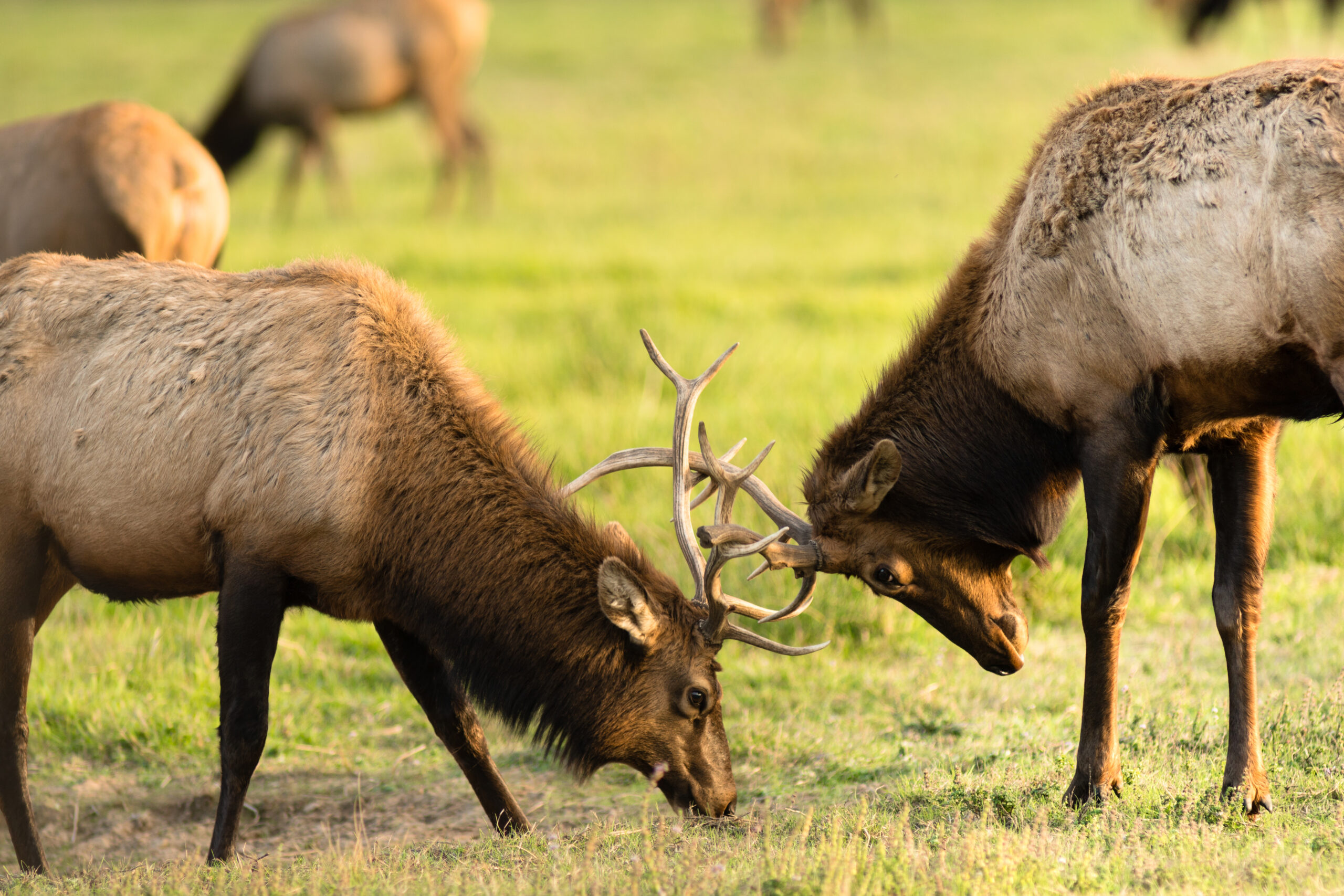This page may contain affiliate links.
Read our disclosure and privacy policy here.
Competition between living things can sometimes take the form of some of the most spectacular battles in nature! In the image above we see two bull (male) elks locking horns in a display of strength, fighting for dominance and to win over a mate. Limited food and vital resources can give rise to various kinds of competition in nature. Scientists organize these kinds of competition into two main categories. Interspecific competition and intraspecific competition. These can sound pretty complex, but they are actually concepts that are really easy to understand – and once you do, you’ll see these kinds of competitions happening everywhere around you, from the birds in your neighborhood to the ants in your back yard – and even inside your own house!
Table of Contents
You Want To Fight? Competition Between Living Things
Why Do Living Things Compete?
Well, there are a lot of reasons why living things compete against one another, but it all boils down to the fact that all resources are limited. Resources means food, water, availability of a mate, shelter, and so on – the basic and vital requirements for most living things, from bacteria to fungi to plants to animals… including us humans.
When animals compete, it is based on their strong survival and procreation (having kids) instincts. They will spend a lot of energy, and sometimes put themselves in great danger, to get everything they need to survive and procreate.
When plants and fungi compete, they do not do it based on instinct, and they do not ‘think’ in the same way animals do. Instead, they respond to environmental changes like the availability of light, heat, and water, as well as the presence of chemicals or other compounds around them. Plants will react in different ways to try to get what they need. A plant that is not getting enough sunlight, for example, might grow a longer stem so that they can get taller and reach an area with more light. This is the way they might compete against other plants to get the light they need to survive.
Bacteria and viruses are no different. They are incredibly small and react to small changes in their environment, like the presence of certain chemicals or other bacteria. Bacteria and viruses are incredibly adaptable as well, making unexpected choices, and behaving in unexpected ways, in order to ensure their own survival in an environment of limited resources.
Interspecific vs Intraspecific Competition
Competition is considered a lose/lose scenario in most cases (also described as -/-, where the – sign indicates a negative effect on the individuals who are competing), because the success of both species would be higher if the other simply did not exist. Imagine for example that there is one last doughnut in the box, and both you and your friend want it. You might compete by trying to run to the box to get there first. If you both get there at the same time, you might start to push and shove each other trying to get that last doughnut! Maybe you’ll each get a small piece of it, or maybe it gets ruined and no one gets any. This is why competition is usually a lose lose (-/-) situation. Competition might help each of you to get something, but it is not as good as if there was never any competition in the first place! If there was no friend to compete against, you would get the whole doughnut to yourself!
There are a variety of other types of interactions between living things that have better and worse outcomes, so competition is not all bad. Scientists have classified competition between living things into two general categories:
- Interspecific Competition: Competition between members of different species.
- Intraspecific Competition: Competition between members of the same species.

Did You Know?
Did You Know?
Download Printables
GOLDEN INVADERS
Goldfish were first introduced as pets in North America, but are sometimes released into the wild by pet owners who can no longer care for them. You might they are are pretty small, but they can grow up to the size of a football in the wild! They cause huge problems to local ecosystems, and are considered an invasive species. They are ravenous consumers of aquatic plants, fish eggs, and fish larvae, and tend to muddy the waters with their activity. Muddy waters lower the ability for sunlight to reach aquatic plants, leading to a loss of habitat for organisms that rely on these plants. Their large appetite also leaves less food for those native species that share the same food preferences. And they reproduce (have babies) very easily and in large numbers. So if you have goldfish, do not release them into the wild! They will outcompete many local species of aquatic animals, causing a loss of diversity and stability to our ecosystems.

Interspecific Competition
Interspecific competition occurs when different species compete with each other for resources they both need to survive. It’s a battle for food, water, or a place to call home. Imagine lions and hyenas in the African savannah fighting over a freshly caught prey. They both want to claim the meal for themselves, so they get into a fierce competition to see who will get the most food. The hyenas will try to intimidate and harass the lion, because they know that if they got into a direct fight, they would likely lose. The lion knows that it would likely win if it tried to fight them directly but it might get too injured to recover from the battle. So, it becomes a test of both strength and wit.
Birds of different species may compete for the best nesting spots in tall trees, where they build their nests and raise their chicks. They have to be quick and clever to outsmart their rivals and secure a safe and comfortable spot. Interspecific competition is like a never-ending game of survival between different species. They are always fighting for the limited resources available in their shared environment to ensure their kind comes out on top.
Intraspecific Competition
Intraspecific competition takes place between individuals of the same species, as they compete against each other for limited resources.
During the mating season, male deer, known as bucks, lock antlers and push against each other to establish dominance and win the right to mate with females. It’s a display of strength and determination. In the plant kingdom, intraspecific competition can be observed when plants in a crowded forest fight for sunlight and nutrients. They stretch their branches and grow tall to reach the sunlight above, competing for every bit of energy they can absorb from the sun. The taller plants and trees get the most sunlight. It’s a race for survival within the same species, where individuals compete against each other to be the fittest and secure the resources they need to grow and reproduce.
How Do Living Things Compete?
When living things compete for limited resources, there is really only one goal – get the resource. In order to get that resource, they either need to get it first, or they need to prevent another organism from getting it first.
It’s like the saying goes, ‘the early bird gets the worm’. That’s true, so long as it can hang onto it and another birds doesn’t swoop down and steal the worm!
In general, there are two main strategies that competitors in nature will use to secure access to the limited resources that they need:
- Exploitation Competition: This is where an organism will try to gather and take away as much of a particular resource as possible to prevent its competitors from getting any.
- Interference Competition: This is where an organism will actively and aggressively defend it’s territory to protect it’s right to access the valuable resources it contains.
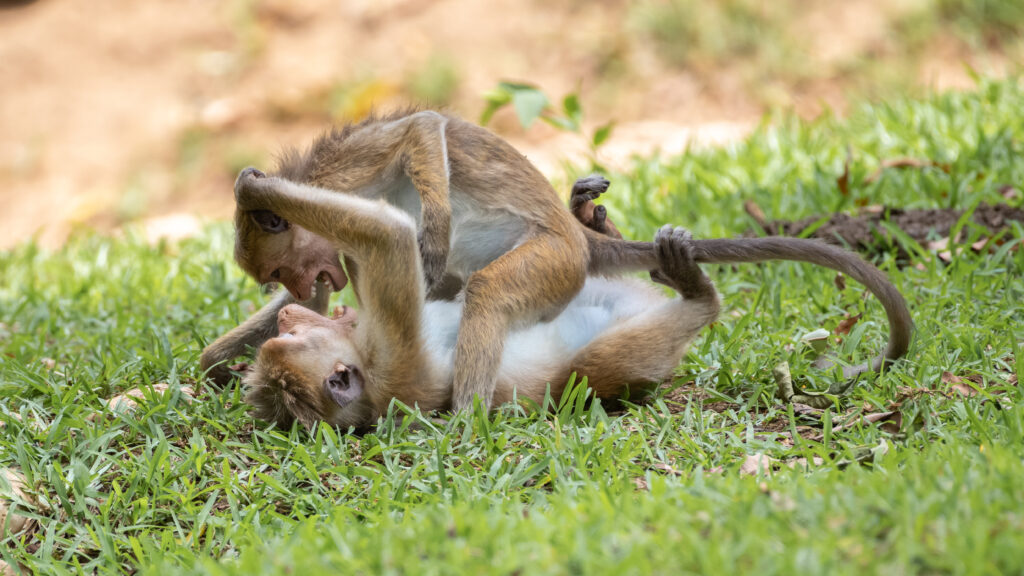
Primates can be territorial, which is a form of intraspecific interference competition. Playfighting at a young age can train them for the offensive and defensive skills they need as adults to protect their families and territory from other primates.
Recently my kids and I were so excited about the new Legend Of Zelda game launch from Nintendo, we planned to get to the video game store early that day to be the first to get the game. When we got to the store, there was a lineup around the block! We were tying to complete against everyone else to get the game first – everyone else, of course, had the same idea. We did eventually get the game, so the story has a happy ending, but in nature, sometimes the ending is not so happy.
When two individuals compete in nature, they both will be trying their best to succeed, and they both often have the same idea. If they are both evenly matched, then the battle can go on forever, neither one of them getting the upper hand, and each one having to settle for less than they would get if the other did not exist. So whether their strategy is exploitation competition or interference competition, neither gains the upper hand, and both are locked in an endless battle to keep what they have, never gaining or losing access to resources. This is why competition is considered a lose/lose (-/-) interaction.
Sometimes however, one of the competing individuals is stronger, or faster, or has some quality that allows it to perform better than the other. It starts to get more food, more resources than the other. For us, maybe we know the video game store owner and arrange to meet her earlier in the morning, before the store opens! Or maybe there is a back entrance to the store that only we know about! This is when the individual or species that is losing the competition must make changes. This is when competition begins to have real consequences. But there’s a way out.
The Consequences Of Competition
Competition between evenly matched individuals can go on forever. Lions and hyenas for example appear locked in an endless battle. Neither is able to gain the advantage. However, when one individual does gain an advantage in a competition, the balance starts to shift, and changes start happening.
If the species that is losing the competition cannot adapt, the only other path is extinction. If they cannot get the food and resources they need through direct competition, they need to find another way, or they won’t make it. There are only two paths forward in these situations:
- Resource Partitioning: This is where competing individuals or species will alter their behaviour to avoid conflict.
- Extinction: This is where a species is unfortunately unable to adapt to a reduction in food or resources, and goes extinct.
Resource Partitioning
Because competition harms all species involved, animals frequently evolve ways to minimize it. If animals competed directly over vital resources all the time, most species would go extinct and the ecosystem would collapse. This process of splitting resources through various strategies is called resource partitioning. It plays a big role in reducing competition and promoting coexistence among species that require similar resources, creating a fair system where each species has its own space and specific things it relies on to survive.
Picture a forest with many bird species. Some birds may feed on insects high up in the trees, while others search for insects on the ground. By utilizing different parts of the forest and targeting different types of prey, they reduce competition for food. This is known as spatial resource partitioning.
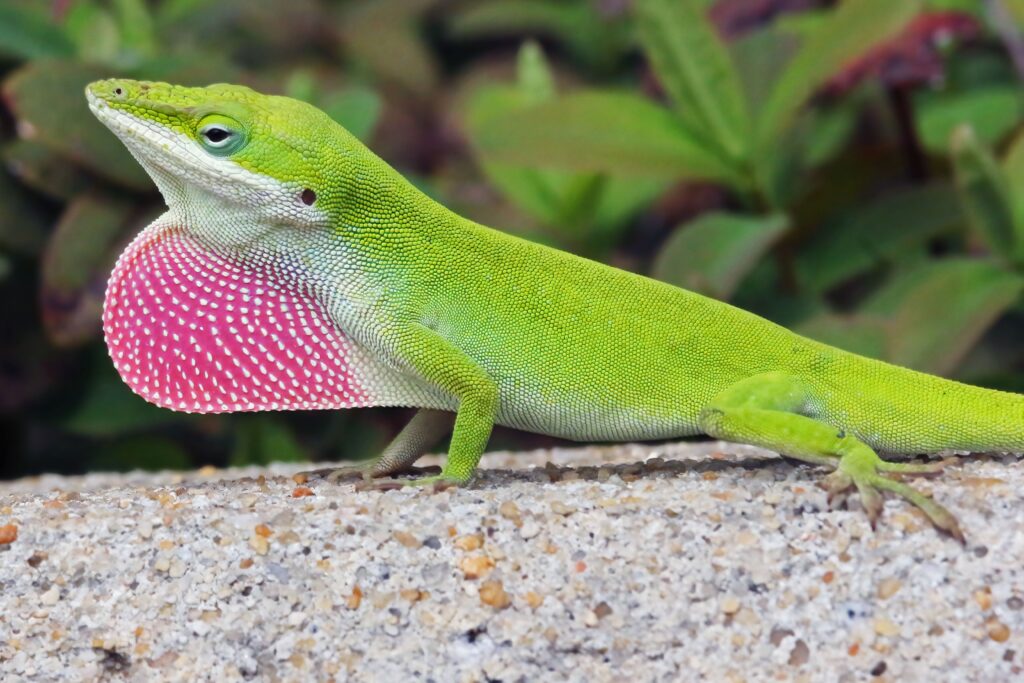
This is a green anole lizard, found on the island of Puerto Rico. Anole lizards are a great example of resource partitioning. Heavy competition for vital resources has led to the evolution of a variety of different anole lizard species that each have their own preferred habitat and food preferences.
Resource partitioning can also happen in terms of time. Some animals may be active during the day, while others are active at night. This allows them to access resources without competing directly. For instance, nocturnal animals like owls and bats hunt for prey at night, while diurnal animals like squirrels and birds search for food during the day.
Resource partitioning is an important mechanism that promotes biodiversity and allows species to coexist in ecosystems. By finding their own niches and utilizing resources in different ways, species can minimize competition and increase their chances of survival. This contributes to the overall diversity and stability of the ecosystem.
Extinction
It does happen however that an some species are unable to find a way to share resources. Sudden environmental shifts, or rapid changes in a competitor species can make competition more fierce. Species that are unable to find ways to adapt to the increasingly competitive environment will go extinct. It is an unfortunate reality of nature that organisms that are unable to adapt quickly to a changing environment will eventually die out.

Did You Know?
Did You Know?
Download Printables
Rapid Extinction
Have you ever heard of the dodo bird? Unfortunately, they don’t exist anymore. They went extinct around 1690 because they were not able to adapt to rapid changes in their environment. To be fair, it’s not really their fault. Their extinction was caused by human intervention. When they were found by Dutch sailors around 1600, they had never seen humans before. They also had no natural predators on their island. As a result, they did not have any fear towards humans and were very easy to hunt. Within 80 to 90 years of their discovery, deforestation and the introduction of more animals to the island by humans led to the rapid extinction of the dodo. They had no time to adapt.
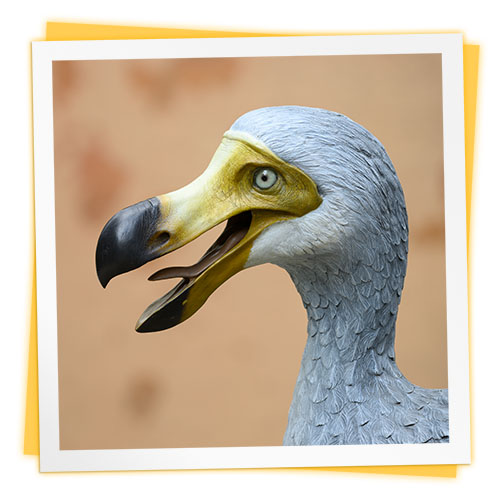
Competition Between Living Things: Summary & Review
Competition in nature can be spectacular! But it can also be harsh and unforgiving. Species that are able to adapt and find compromises are most likely to survive and thrive. Those that are not able to find a way to compete will eventually go extinct.
Competition does not only occur between organisms of different species. Even members of the same species will compete for dominance, the best hunting grounds, the best foods, and the best mates. Competition between different species is called interspecific competition, while competition between the same species is called intraspecific competition.
One of the best results one can hope for from competition is resource partitioning. This is when both species find a way to adapt to the limited resources by adjusting their behavior to prevent direct conflicts. Competing birds for example may change their behavior so that one species hunts in the morning, and the other hunts at night.
Competition is a challenging part of nature, where organisms strive to meet their needs and secure their place in the world. Both interspecific and intraspecific competition play important roles in shaping the balance of nature, driving species to adapt and evolve, ensuring that only the most adaptable and resilient species and individuals thrive. Through competition, organisms constantly push themselves to their limits, trying to outperform their rivals and ensure their survival in the ever-changing world they inhabit.

DISCUSSION
DISCUSSION
DISCUSSION
FOLLOW-UP TOPICS
Science Topics
Interspecific vs Intraspecific
We learned that interspecific competition occurs between individuals of different species, while intraspecific competition occurs between individuals of the same species.
- Can you give an example of an organism that has both interspecific AND intraspecific competitions?
- Can you think of any animals that do not need to compete at all?
- What is the cause of competition between organisms? Is it the same thing that causes competition between humans?
Exploitation vs Interference
We know that exploitation competition has to do with hoarding of a particular vital resource, and interference competition has to do with preventing access to a resource.
- Are animals that are territorial using exploitation competition or interference competition?
- Imagine that there is a monkey, let’s call him George. George loves bananas, and there is only one single banana tree nearby, in the middle of an open field. Other monkeys want the bananas as well, but George really wants those bananas for himself. Which is the best way for George to compete for those bananas? Exploitation, or Interference? Why?
- Similar to question 2, imagine there is a squirrel called Maya. Maya really loves acorns, but there is only a single oak tree producing acorns in the middle of the forest. The other squirrels want the acorns as well. What is the best way for Maya to complete? Exploitation, or Interference? Why?
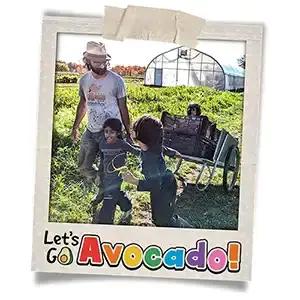
There’s a lot to explore right where we are, in our own neighborhoods and backyards! Join us while we get off the couch and explore the everyday wonders of nature, science, space, engineering, art, and anything else we stumble upon during on our adventures.


